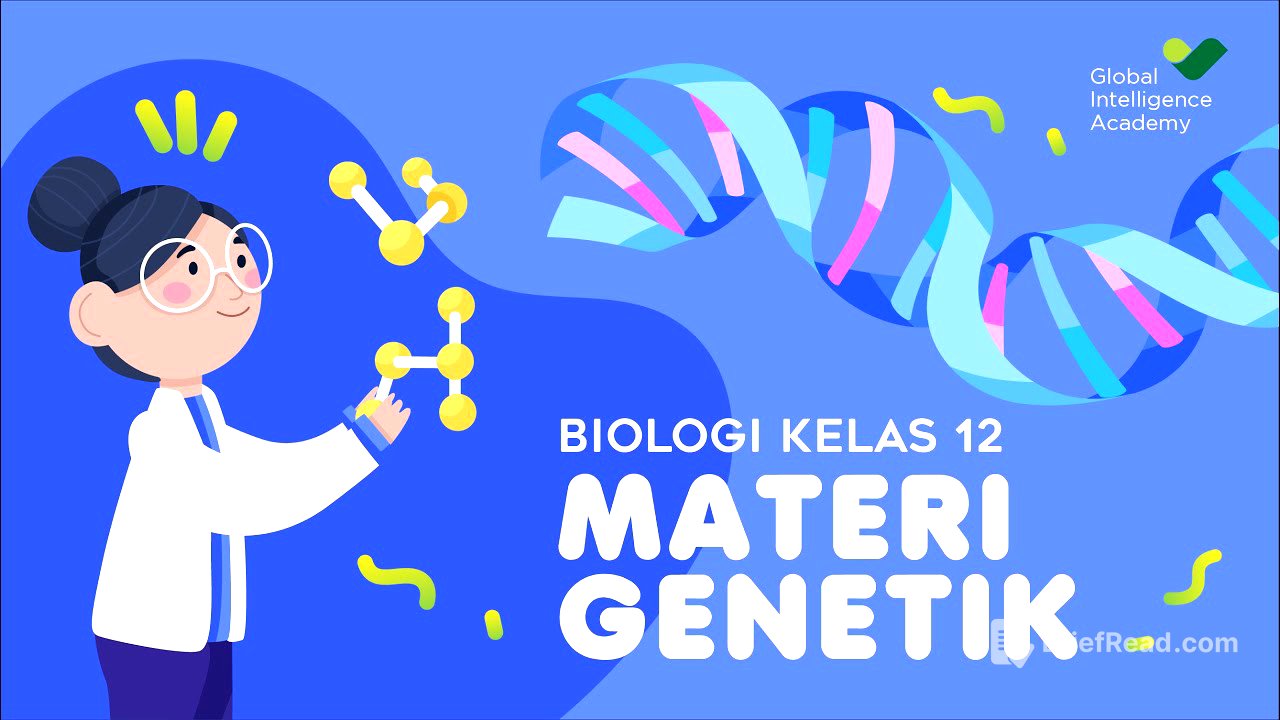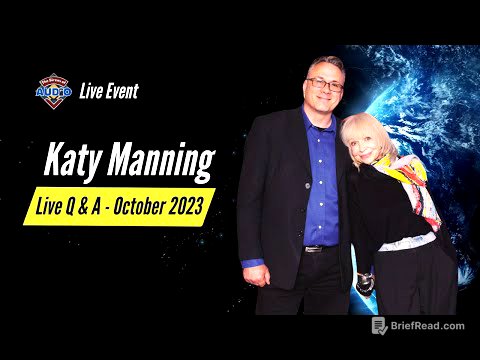TLDR;
This video provides an overview of genetic material, including chromosomes, genes, DNA, RNA, and protein synthesis. It explains the structure and function of each component, as well as the processes involved in DNA replication, transcription, and translation. The video also includes example questions to help viewers understand the concepts better.
- Chromosomes are structures in the cell nucleus that contain DNA and RNA.
- Genes are the smallest units of heredity and are responsible for controlling specific traits.
- DNA is a double helix molecule that carries genetic information from parents to offspring.
- RNA is a single-stranded molecule that plays a role in protein synthesis.
- Protein synthesis is the process of translating genes into proteins.
Introduction [0:00]
The video introduces the concept of genetic material and its importance in determining individual characteristics. It highlights that fingerprints, influenced by genetic material, are unique to each person and used for personal identification. The video aims to explain the components of genetic material, including DNA, chromosomes, RNA, genes, and protein synthesis.
Chromosomes [1:23]
Chromosomes are located in the cell nucleus and are composed of chromatin. They consist of DNA, RNA, and protein. Chromosomes vary in size and have a structure that includes a centromere, chromosome arms, chromatids, chromomeres, a matrix, and telomeres. Based on function, chromosomes are divided into autosomes (body chromosomes) and gonosomes (sex chromosomes). Autosomes determine body characteristics and are diploid, while gonosomes determine sex and are haploid. Based on the position of the centromere, chromosomes can be metacentric, submetacentric, acrocentric, or telocentric. Human body cells have 23 pairs of homologous chromosomes, including 22 pairs of autosomes and one pair of sex chromosomes. The chromosome formula for males is 22AA + XY, and for females, it is 22AA + XX.
Genes [4:57]
Genes are the smallest units of a living creature that contain hereditary substances and determine individual traits. They are located on chromosomes and consist of proteins and nucleic acids (DNA and RNA). Genes that occupy the same locus on homologous chromosomes are called alleles. Each gene controls a specific trait and is represented by capital letters for dominant traits and lowercase letters for recessive traits. The arrangement of genes in individuals is called the genotype. Genes contain genetic information, have different tasks and functions, can undergo duplication during cell division, are determined by nitrogen base combinations, convey genetic information from parents to offspring, and regulate metabolism and development.
DNA (Deoxyribonucleic Acid) [6:10]
DNA is the genetic material inherited from parents, existing as a double helix. It can be heterocatalytic (forming RNA through protein synthesis) or autocatalytic (replicating to produce new DNA). DNA is a polynucleotide composed of nucleotides, each containing a pentose sugar (deoxyribose), phosphoric acid, and nitrogen bases. The nitrogen bases include adenine (A), guanine (G), cytosine (C), and thymine (T). Cytosine always connects to guanine with three hydrogen bonds, while adenine connects to thymine with two hydrogen bonds. Nucleosides are formed when nitrogen bases combine with deoxyribose sugar, and nucleotides are formed when nucleosides combine with phosphate groups.
DNA Replication [7:39]
As an autocatalytic genetic material, DNA can replicate itself to form new DNA identical to the original. This process occurs in young cells during interphase in mitosis. There are three types of DNA replication: conservative (a new double helix chain is produced), semiconservative (old DNA separates and each strand prints its partner), and dispersive (DNA chain is broken into segments that form new segments and join the old ones). The DNA replication process involves enzymes such as ligase (connects newly formed DNA chains), polymerase (combines mononucleotide chains), and helicase (opens the double DNA chain).
RNA (Ribonucleic Acid) [8:56]
RNA is a polynucleotide shorter than DNA, consisting of a single helix composed of ribose sugar molecules, phosphate groups, and nitrogen bases. The nitrogen bases in RNA include adenine (A), guanine (G), uracil (U), and cytosine (C). Based on location and function, RNA is divided into three types: messenger RNA (mRNA), ribosomal RNA (rRNA), and transfer RNA (tRNA). mRNA carries the genetic code from DNA to ribosomes, rRNA is found in ribosomes and serves as a place for protein formation, and tRNA translates codons into amino acids and transports them to the ribosome during translation.
Protein Synthesis [10:19]
Protein synthesis is the translation of genes (DNA) into RNA, forming a chain through transcription and translation. DNA in the nucleus forms mRNA to carry the genetic code, and mRNA leaves the nucleus to the ribosome (transcription). tRNA carries amino acids to the ribosome, matching the mRNA codons, and amino acids line up to form the desired protein (translation). The genetic code consists of instructions that formulate the type of protein to be made, with characteristics determined by the number of amino acids. There are start and stop codons that initiate and terminate protein synthesis, respectively.
Genetic Code and Translation [12:02]
To translate the genetic code from DNA into amino acids, it's important to understand that DNA and RNA strands are antiparallel, having 5' and 3' ends based on the phosphate group's position. Sense DNA has a 5' to 3' direction and the same sequence as mRNA (coding strand), while antisense DNA has a 3' to 5' direction and serves as a template for transcription (non-coding strand). In protein synthesis, antisense DNA is converted into sense DNA, and thymine (T) is replaced with uracil (U) to form mRNA. The mRNA codon is then translated into a protein.
Example Questions [14:46]
The video provides example questions to better understand the concepts. The first question involves sorting statements into the correct sequence of protein synthesis stages. The second question involves translating an antisense DNA chain into an mRNA codon chain. The third question involves changing a DNA chain into an amino acid sequence according to the steps of protein synthesis.
Conclusion [17:32]
The video concludes by summarizing that genetic information is stored in the form of genetic material, including DNA and RNA. DNA stores and encodes genetic codes, while RNA changes the genetic information in DNA to be used in protein synthesis. DNA segments form genes that regulate metabolism, development, and carry genetic information. DNA, RNA, and genes are arranged to form chromosomes.






![The 3rd Word - The Words - Risale-i Nur Collection [AUDIOBOOK]](https://wm-img.halpindev.com/p-briefread_c-10_b-10/urlb/aHR0cDovL2ltZy55b3V0dWJlLmNvbS92aS96OGY4ZWkwVHR2RS9ocWRlZmF1bHQuanBn.jpg)


